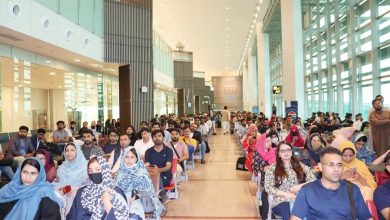Japan Aug machinery orders fall, overseas slowdown may weigh

[ad_1]
TOKYO : Japan core machinery orders fell for a second straight month in August, suggesting worries about a global economic slowdown and China’s wobbly recovery may be hurting companies’ appetite to make fresh investments.
Core orders, a highly volatile data series regarded as a barometer of capital expenditure in the coming six to nine months, slipped 0.5 per cent in August from the previous month, Cabinet Office data showed on Thursday.
That compared with the median forecast for 0.4 per cent growth by economists in a Reuters poll.
On a year-on-year basis, core orders, which exclude volatile numbers from shipping and electric utilities, declined 7.7 per cent in August, data found. That compared with a forecast of a 7.3 per cent drop.
The government retained its view that machinery orders are “stalling”.
By sector, orders from manufacturers climbed 2.2 per cent in August from the previous month, rebounding from a 5.3 fall in July, due to rises in orders from industries such as chemical products and autos.
Those from the service-sector declined 3.8 per cent after a 1.3 per cent gain in the prior month, due to falls in orders from the finance and insurance sector, according to data by the Cabinet Office.
Capital spending is one of the key drivers for the world’s third-largest economy and a major indicator of business confidence.
Business morale at large Japanese manufacturers was subdued in October, although the services-sector mood edged up, the Reuters Tankan poll showed on Wednesday, as upbeat domestic demand helped partly offset the hit to the economy from global headwinds.
Prime Minister Fumio Kishida’s government will compile a new economic stimulus package this month to help households deal with the pain of rising prices and boost wages.
The package will include measures to protect people from cost-push inflation, support sustainable wage and income growth as well as promote domestic investment to spur economic growth.
Japan’s economy grew less than initially estimated in April-June with both capital spending and private consumption falling, underscoring the fragile state of its recovery after the pandemic.
[ad_2]
Source link



